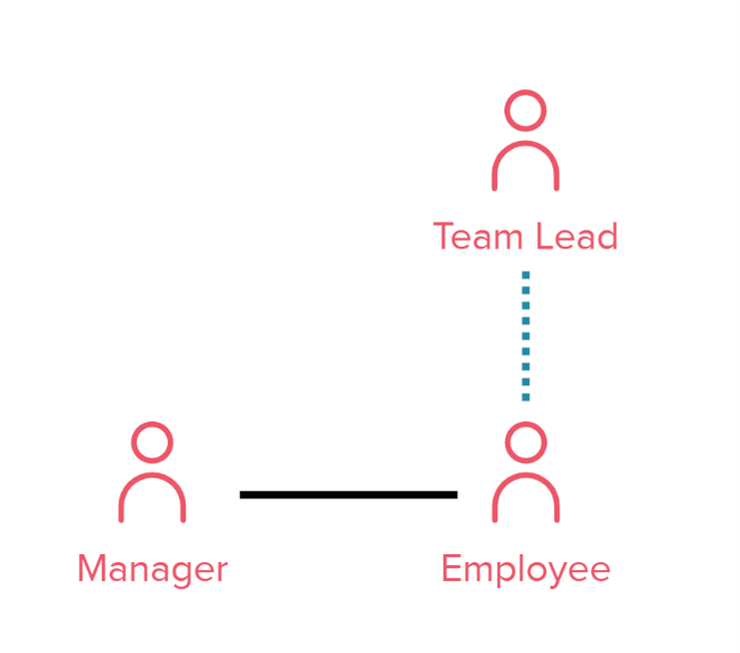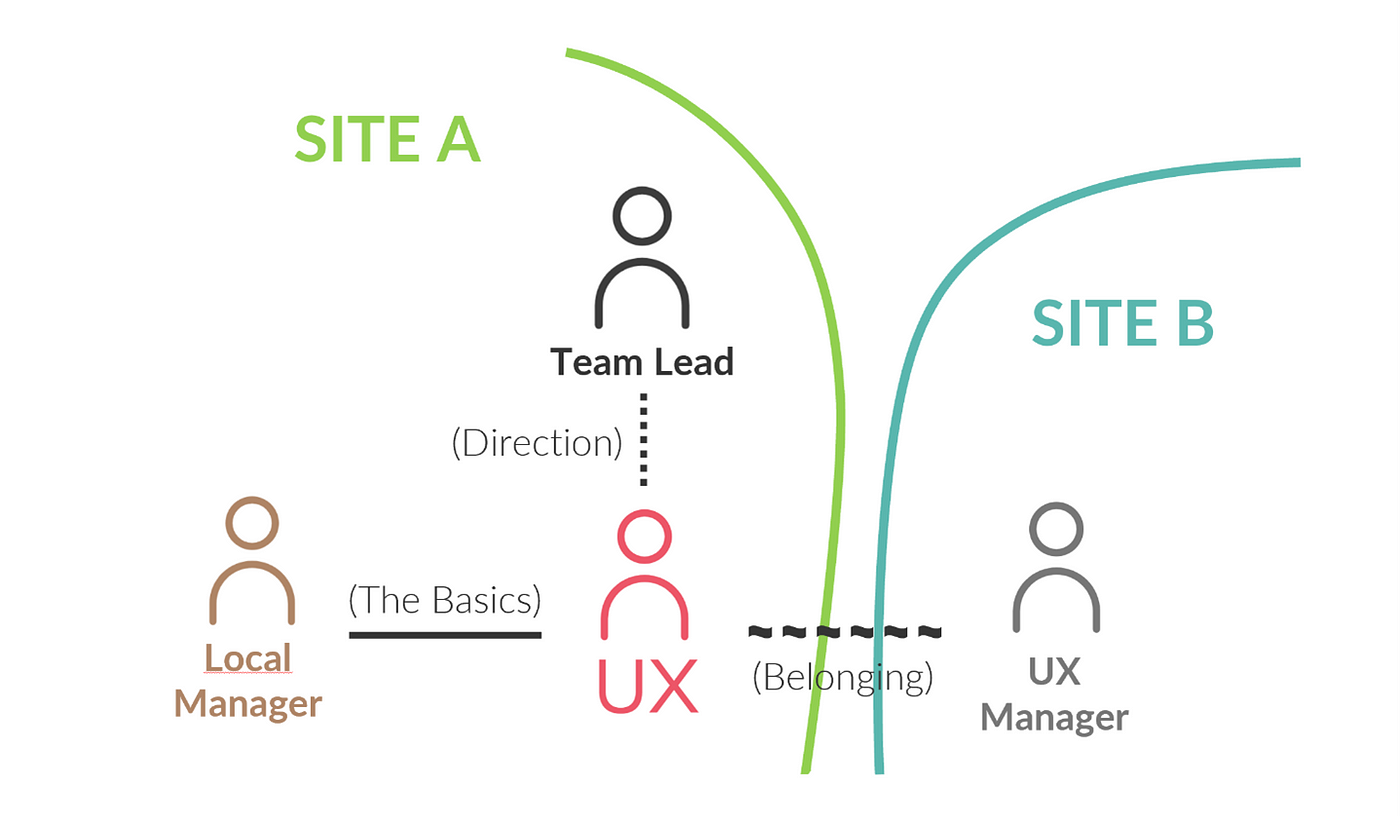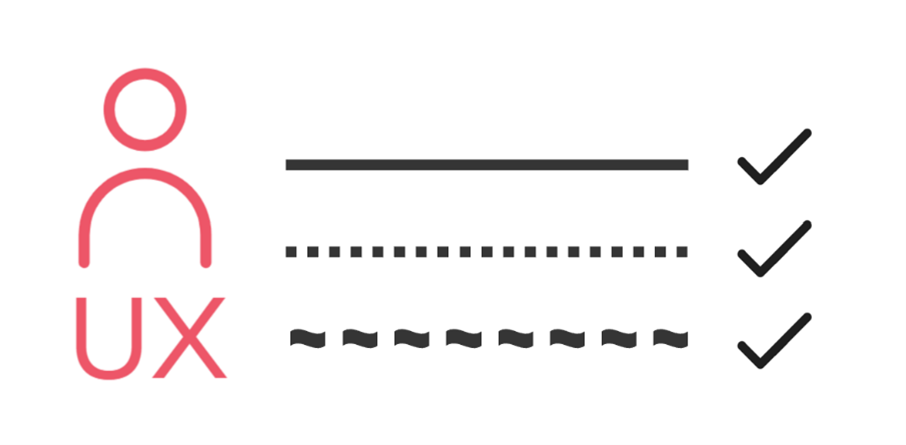

The 3rd dimension of the matrix organization
source link: https://uxdesign.cc/the-3rd-dimension-of-the-matrix-organization-b20a5b71a810
Go to the source link to view the article. You can view the picture content, updated content and better typesetting reading experience. If the link is broken, please click the button below to view the snapshot at that time.

The 3rd dimension of the matrix organization
— when the dotted and the direct line doesn’t cut it
With the rise of ‘high-performing product teams’ by the likes of Marty Cagan, organizing a company in a matrix fashion seems to be popular. More than half of the 300 companies in the 2019 DCI Annual Report claimed to have a ‘hybrid’ organizational model, and this 1950’ies invention has seen somewhat of a new wave with a modern take. Spotify for example, got a lot of attention from product development communities with their “squads” and “chapters”; their lingo for vertical and horizontal teams in the matrix. There are many good articles out there that go above and beyond explaining the pros and cons of the matrix structure, such as these ones:
But for your benefit, I’ll share the short and sweet explanation. The core idea of a matrix organization is that every employee has two reporting lines: a direct line to their manager while having a so-called dotted line to, usually, a team leader.

A big realization many companies might make (including Laerdal Medical — the company where I work) is that there is a need for a third kind of line reporting. We have chosen to call this the wavy-line reporting. (Could have been zigzag, but waves are cooler). I’ll revert to why wavy lines has helped our company in just a second, but first let us look at where the need for the wavy-line reporting stems from.
To put it straight, every employee has three basic needs that need to be fulfilled in order for that person to shine and thrive in her job.
1. The Basics. Every employee needs a place to sit, a desk, a computer, stationary stuff. They also need a contract with a fair salary and expected office hours, as well as approved vacation days, sick leave and other welfare benefits. It’s sort of the tangible foundation of being employed.
2. A Direction. This is about setting the strategic context for the work at hand. They need a mission. However, this is not about assigning detailed tasks and “just build this”-recipes to the employee, since that drastically reduces motivation. Employees working in high performing product teams should be given a direction for their problem space and outcomes to achieve, and then be challenged and motivated to find out how to solve them. This is the mere definition of empowerment.
3. Growth & belonging. As Marty Cagan says, “It is the single most important responsibility of every people manager to develop the skills of their people.” In other words, ensuring the growth of an employee is a key investment that will create long term value for the company. The optimal environment for personal growth of is definitely one where the employee clearly sees the opportunities for an interesting career trajectory. But just as important is an ambience where she feels understood; one that creates a sense of belonging. Someone with more expertise and experience in her domain should regularly check in with her and coach her, as well as overseeing that her skillset is being used, challenged, and developed in the best possible way. In addition, it may be beneficial to align her methods and tools with her colleagues of the same discipline. This will ensure consistency in the products being developed in different teams, but also give her an arena to discuss and explore discipline-specific challenges with her kin.
Now, you might say “a good manager should be able to all of those things”. And you are right that this is commonly expected. Both in classic hierarchical organizations and more modern embedded ones, you typically have one single manager with the responsibility to fulfill all these three needs. Yet, very often the need for growth and belonging is neglected. Especially in embedded organizations with cross-disciplinary teams, the manager would most often not relate to all the individual team members’ functional disciplines and nor would they have sufficient time to follow up systematically and frequently with all their team members. As a consequence, the team members would have to seek coaching and career development advise elsewhere, at their own initiative.
In fact, the matrix organization was developed partly to remediate this flaw. With the modern matrix organization the responsibility of fulfilling the three needs is split between two people.
What is called “the direct-line reporting” is the manager-employee relationship dealing with the basics (1) and the growth & belonging (3). This manager often represents the same discipline as the employee, but far from always. On the other hand, the so-called “dotted-line reporting” is all about setting the direction (2) and strategic context for the employee’s day-to-day agenda, and is usually handled by a team lead.

On paper this looks great and can probably work very well for a lot of companies. However, in a large and global tech company with multiple product development sites spread across the world, it can sometimes be challenging to live up to the basic idea of the matrix organization: the two dimensions of the matrix might create some limitations that will negatively affect the employee. Here’s a typical example: A smaller startup company is being acquired by a larger tech company in a different country, and now the startup company is being defined as one of the company’s many product teams. In other words, it becomes a small company site in a country other than the headquarters.
Now, let’s say they are being told to hire their first UX designer to sit with the team. The basics, a.k.a the direct-line reporting will then be handled by a local manager on-site for practical and logistical reasons. As you can imagine it would make little sense for a manager in another country to provide for practical things such as a computer (might have the wrong country keyboard layout!) and you should also have good insights on local conditions to set a fair salary level. The direction, or the dotted line, should also be handled locally, as this should be managed by someone you work with on a daily basis. But what about growth & belonging for the newly hired UX designer? This is where a local manager should not take on that responsibility since the former start-up company simply doesn’t have people around that would truly understand her challenges. Hence, the new designer would be better off getting a “wavy line” to a UX Design Manager at a site where they have a substantial UX design presence.

In essence, this is what we have done in Laerdal Medical: We say that every employee should always have three lines of reporting taken care of by someone. And we say someone, in order to be flexible. It can be the same, or three different people — whatever works best for a particular employee at a given site.
- The direct-line reporting takes care of the basics.
- The dotted-line reporting takes care of the direction.
- The wavy-line reporting takes care of the growth & belonging.
In Laerdal Medical most of our developers, engineers and designers will typically have the direct and the wavy line handled by the same manager. But sometimes, and especially for disciplines with low representation at certain sites, it makes sense to appoint the three lines to three different people to make sure the wavy line is as strong as it can be.
But the bottom line is that the matrix organization is really 3-dimensional, and both the company and the employees will benefit from top notch management in all three dimensions. So, get your lines in check!

Recommend
About Joyk
Aggregate valuable and interesting links.
Joyk means Joy of geeK